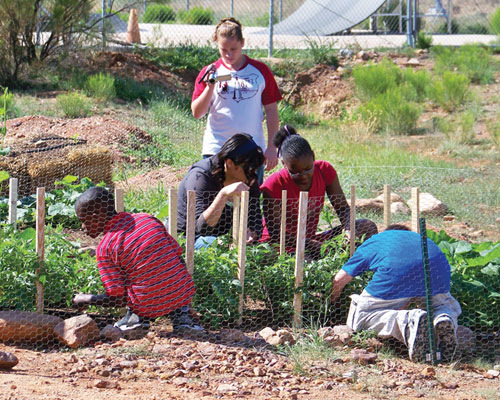Civic Engagement programming at the preschool, elementary, and upper elementary levels is not only worthwhile, but easy to implement! There are so many great nonprofit organizations doing important work in our country—ready, willing, and able to partner with you. Follow these steps to start your own program today.
Step One: Start In-House
Get your team members together and discuss Civic Engagement as it pertains to working with children. Read the definitions of Civic Engagement. (There are two primary definitions: political involvement and involvement with other issues that affect society—the latter is the definition to focus on when working with younger children.) Make sure your staff are knowledgeable on the process you will use and prepared to help the children with their initiative. Emphasize with your team to keep projects and initiative's realistic. Be grounded; assist the children in making good, doable, realistic decisions.
Step Two: Engage the Children
Your staff will now facilitate the initial student groups. Staff start by giving a basic overview of what the children are going to be doing, something to the words of: We are starting the ABC Program's "Kids Give Back" campaign today. Our first job will be to start discussing community needs that we could possibly get involved with and how we could help with that need by helping a nonprofit in our area. Let's brainstorm ideas for the next twenty to thirty minutes. We will write them down and then think about them until tomorrow. Tomorrow we will all vote on which issue/cause (non-profit) we are going to work on. The process is not a one-day event. To be thoughtful and make a more lasting impact, the process should have time built in to allow for all children to contribute at all stages of the initiative. Staff can give ideas: keep it local, be realistic and try to connect it to our lives in our local school community. Most important, however, staff need to let the children make the final decision on the project.
Step Three: Collaborate!
After the children have selected the civic cause they will support, if appropriate, staff should invite a representative from the nonprofit to meet with the children and share information about what the group does and how it helps. If the project the children have decided to undertake does not have a local nonprofit connection, a staff member or other school professional able to discuss the "cause" in greater detail should present to the children. The goal during this step is to "equip" the children with greater understanding of cause and allow them to be creative in their work towards their goal. Encourage entrepreneurship!
Step Four: Let Them Go
Make sure the students tell everyone what they are doing, while they are doing it. This step is all about intentional marketing. The children will be raising awareness for their project both intentionally (posters, events, et cetera) and unintentionally (telling their friends at the lunch table, discussing what they are doing afterschool with their parents)—but staff need to make sure all stakeholders get the information. Staff should make sure the greater school community, especially the school principal and teachers, knows what the children are doing. In addition, this is a great opportunity to do a press release to your local newspapers and online news sites, highlighting this important student-led program and your afterschool program's ongoing work. The children, during this step, will be highly engaged with the work of the project: sales, events, direct solicitation of donations or goods ... the sky's the limit!
Step Five: Cross the Finish Line and Celebrate!
It's time to complete the project. The work has been done, the funds raised or goods collected, and the letters written or the advocacy completed. This is the most important step in the process and the step that will have the greatest long term impact on the children. During this step you will donate to the nonprofit or cause. The act of donation is an important point for your staff to emphasize to the children just how they helped. Depending on the age of the children, staff may need to spend more time discussing how the funds raised will go to the nonprofit and how the nonprofit will use the funds to help. It is important to celebrate the hard work and success of the students: Hold a party, cut a ribbon, and eat some ice cream! This is something to be excited about; show your pride, and your students will feel it themselves. Finally, document the students' efforts and share the final results with all of your stakeholders. This final closure allows everyone to reflect on the how they individually contributed to a group donation that assisted a real-life issue.
Youth Civic Engagement programs help children understand how they can contribute to our society, and afterschool and other OST programs are the perfect setting to provide these types of learning experiences.
Written by Vincent D. LaFontan, MHA, who worked in the afterschool field, and as a consultant to youth-serving organizations, for twenty years. Currently, he is the director of Farmington Extended Care & Learning in Farmington, Connecticut; a board member of the Connecticut After School Network; and vice chair of the National AfterSchool Association's board of directors in Washington, D.C.

